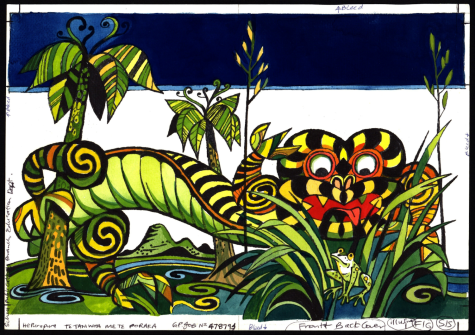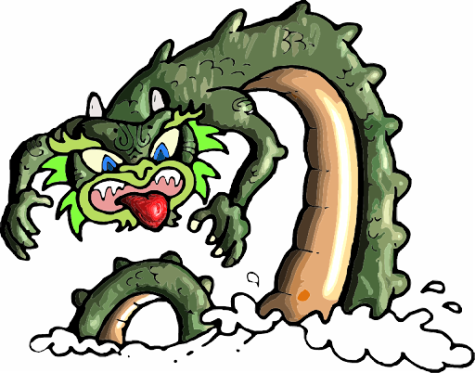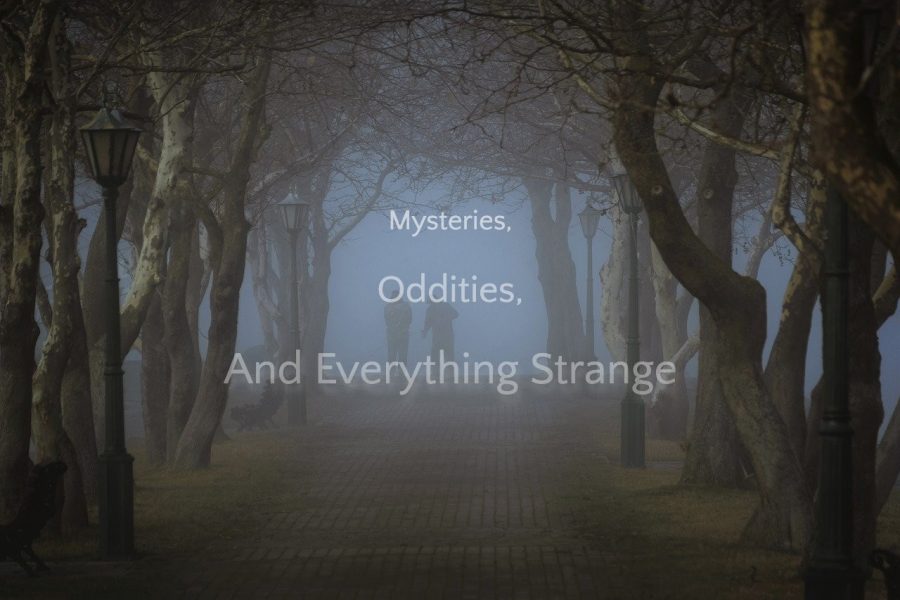Mysteries, Oddities, and Everything Strange: Taniwha
June 13, 2022
Taniwha: The Kiwi Dragon
Although it isn’t technically a continent, Oceania is a place made of multiple countries that has a large amount of culture and legends. Scattered throughout the Pacific Ocean, countries like Fiji, Kiribati, and Tuvalu comprise a group of small island countries that are based in Polynesian tales. Australia is commonly known as the biggest part of Oceania (though many consider it as a continent of its own), but the second largest is located to the southwest. New Zealand is home to its own culture and history, and, despite its almost 6 sheep for every one person, has a legend that is seen as both a blessing and a curse.
 The taniwha usually live in dark caves, rivers, or out in the sea, preferring dark places, particularly enjoying rip currents and giant waves. These creatures had different roles all throughout Polynesia, but some regard it as a friendly, respected, and helpful creature while others fear it as a human eater and killer that kidnapped women. People would give it gifts and other offerings, believing it to be a supernatural guardian. These dragon-like creatures ranged in fictional reptilian descriptions, as some were more similar to lizards and snakes while others leaned towards dragons. Commonly, they had wings and would be able to camouflage as sharks, whales, or even trees. The name is derived from the Māori word for Great White Shark (Mangō-taniwha).
The taniwha usually live in dark caves, rivers, or out in the sea, preferring dark places, particularly enjoying rip currents and giant waves. These creatures had different roles all throughout Polynesia, but some regard it as a friendly, respected, and helpful creature while others fear it as a human eater and killer that kidnapped women. People would give it gifts and other offerings, believing it to be a supernatural guardian. These dragon-like creatures ranged in fictional reptilian descriptions, as some were more similar to lizards and snakes while others leaned towards dragons. Commonly, they had wings and would be able to camouflage as sharks, whales, or even trees. The name is derived from the Māori word for Great White Shark (Mangō-taniwha).
Taniwhas are credited with many natural phenomena, like carving out bays or causing natural disasters. For instance, Wellington’s Te Whanganui-a-Tara is rumored to have been created by a taniwha, with their bodies being transformed into nearby hills. Araiteuru, a well-known taniwha, created Hokianga Harbour with the help of her sons. Each local tribe around Oceania would have their own guardian taniwha, like the Hauraki being guarded by the taniwha Ureia. Taniwhas would warn people as enemies approached, saving drowning people, and generally respected the people they would act as guardians to. Green twigs or potatoes would be used as offerings.
Unlike many other legends, there are many famous named taniwhas told about in stories. An explorer named Kupe was guided by Tuhirangi as he explored the area separating New Zealand’s northern and southern islands. Tūtaeporoporo was a taniwha raised in a river that ate people along the coast before being killed by someone he had swallowed. Hine-kōrako wed a human who fled after being ostracized and began protecting the local people.
Kupe was guided by Tuhirangi as he explored the area separating New Zealand’s northern and southern islands. Tūtaeporoporo was a taniwha raised in a river that ate people along the coast before being killed by someone he had swallowed. Hine-kōrako wed a human who fled after being ostracized and began protecting the local people.
Taniwhas frequently engaged in battles with members of other tribes who threatened their people or territory. A certain legend describes a taniwha named Hotu-puku who, once killed, was opened up and many undigested human bodies were found inside, along with various human items like dartboards and fur cloaks. Taniwhas were extremely dedicated to their local tribes and would easily kill to protect them.
In some rare cases, humans would even be able to turn into the mythical creatures upon death. A Polynesian priest named Te Tahi-o-te-rangi that was in frequent contact with the taniwhas was transformed into one, and even an ancestor named Tūheita had the chance at such despite having no real relationship with the mythical creatures. Mostly, the taniwha and people had a mutual respect for each other that allowed their civilizations to carry on without cares or frustrations. They were kind creatures who would defend their dedicated tribes to  the death in many cases.
the death in many cases.
The taniwhas have become the site of recent controversies in the more modern world. They have been the subject of many court cases and legal issues, as many big businesses want to encroach upon their territory to build infrastructure. In 2002, a tribe was successfully able to get the government to reroute a route being built to avoid the home of their taniwha, who reportedly took the form of a white eel. In a more unfortunate case, the pleas of local people were trumped in order to build a prison at a respected site. Cases like these, where people are denied respect for their ancestral locations in favor of construction, have been becoming too common of a practice, with other places like Hawaii completely ignoring these principles in favor of a giant telescope. No matter the location, protecting cultural identities is essential in creating a better world and encouraging growth and communication.
And that, my friends, is where this year of article writing will come to an end. I’m grateful for every single person who was willing to give my passages a chance and appreciate the opportunity I was given to write about my interests. I bid adieu to anyone reading this and I look forward to a spectacular year of more articles!
Resources:
https://en.wikipedia.org/wiki/Taniwha
https://www.nzgeo.com/stories/taniwha/
https://en.wikipedia.org/wiki/Thirty_Meter_Telescope_protests
















































Z. R. • Jul 16, 2022 at 10:51 pm
Cool artilce. Nice.